![7 Best Examples Of SMB Loyalty Programs [Retail & Hospitality]](https://resources.marsello.com/hubfs/best%20examples%20of%20loyalty%20programs%20banner.png)
When set up correctly, loyalty programs are one of the best tools for customer retention.
Every business owner knows that bringing in new customers is more expensive than encouraging repeat business from existing customers. That’s why customer loyalty programs are particularly beneficial for smaller businesses, where money is tight and building a loyal customer base is crucial.
Successful loyalty programs spark an emotional connection that brings in repeat customers — which translates to greater revenue.
While bigger companies tend to steal the limelight for their membership programs (e.g., Sephora’s Beauty Insider program), SMBs have cool strategies too!
This article dives into seven of the best SMB loyalty programs, showcasing innovative strategies that would hopefully inspire your initiatives.
Whether an award-winning, family-owned bakery or a homegrown fashion label — these businesses demonstrate the power of personalized loyalty rewards, community engagement, and seamless digital experiences in cultivating brand loyalty.
Let’s dive in.
1. Pinjarra Bakery
Pinjarra Bakery, led by the Pantaleo family, is renowned for Australia's top meat pie. It has garnered over 700 state and national accolades, making it one of WA's most decorated bakeries. With over 25 years of satisfying customers, locals and tourists equally flock to enjoy its delectable treats.
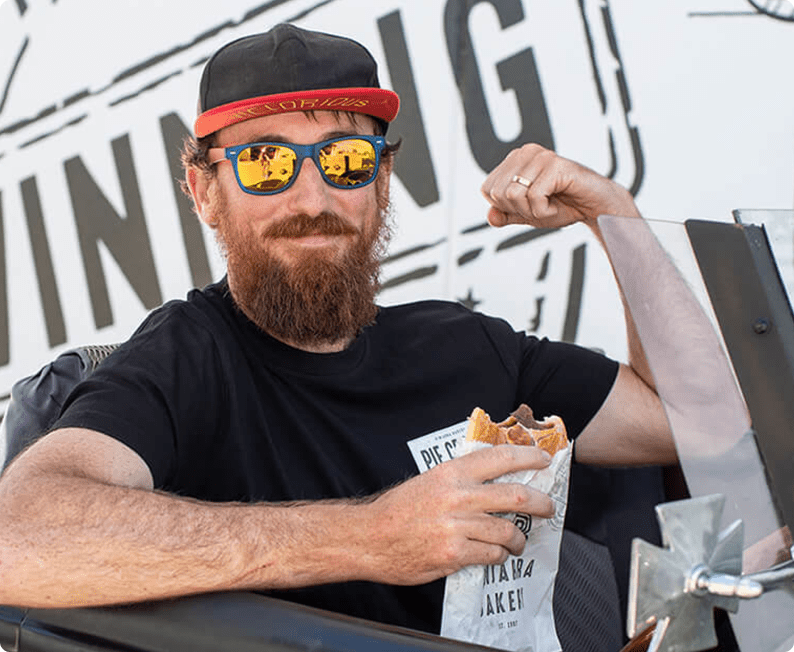
Program purpose:
The company used to have an outdated point-of-sale system when it recognized the need for a more efficient sales and marketing approach. It wanted a cloud-based solution to streamline its operations and decided that Lightspeed was the perfect choice.
The bakery also wanted to integrate its loyalty and marketing with its chosen POS. So it partnered with Marsello to integrate its rewards program seamlessly into its existing tech stack consisting of WooCommerce, Bopple, and Lightspeed (O-Series).
With the loyalty program, it hoped to gather customer feedback and purchase data to enhance the customer experience and tailor offers. It also wanted to use the data for automated marketing, such as sending $10 vouchers to encourage repeat visits from inactive customers.
Program style:
Pinjarra decided on a points-based loyalty program where customers receive 1 reward point for every dollar spent. Bonus points could be earned through referrals and by sharing on social media. Members can then redeem their accumulated points for free products, exclusive benefits, and member-only special offers.
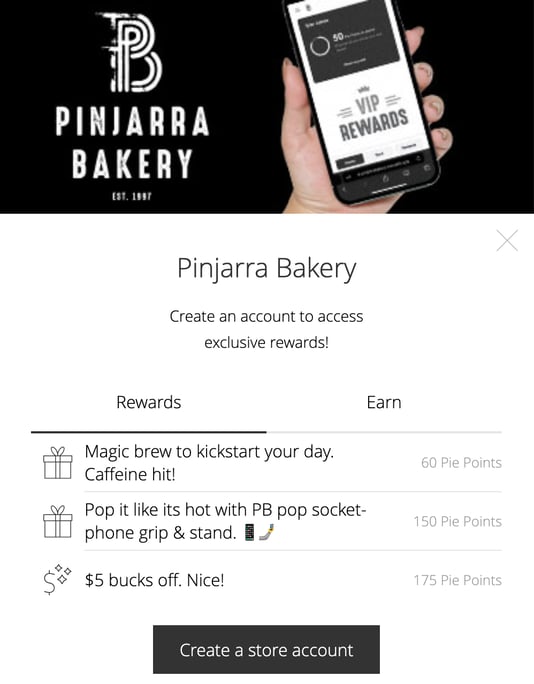
Here’s why its loyalty program succeeds:
- Pinjarra Bakery recognizes the importance of cultivating a robust database of loyal customers. A point system is simple enough for program members to understand — earn certain points and get rewards. This encourages more customers to sign up.
- It simplifies customer engagement by offering effortless QR code-based sign-ups at its locations.
- The loyalty rewards program cleverly doubles as a referral program. It’s also a useful strategy for social media marketing.
- One of the program’s main aims is to harness data from an active database. This helps to drive revenue during campaign launches.
- The program offers a delightful user experience as well. Check out the fun names of its rewards — “Magic brew to kickstart your day. Caffeine hit!” or “Pop it like it’s hot with PB pop socket - phone grip & stand.”
Program results:
Pinjarra attained a 66% repeat purchase rate and increased revenue significantly via targeted marketing campaigns and automation, generating $100k from a single automation.
2. Scotty's Makeup & Beauty
Over four decades, Scotty’s Makeup & Beauty has been a cornerstone of the Aussie beauty industry. Established in 1980 by founder Scott Lattimer, the company introduced global makeup brands to Australia, becoming integral to various sectors including beauty salons, film, TV, and theatre.
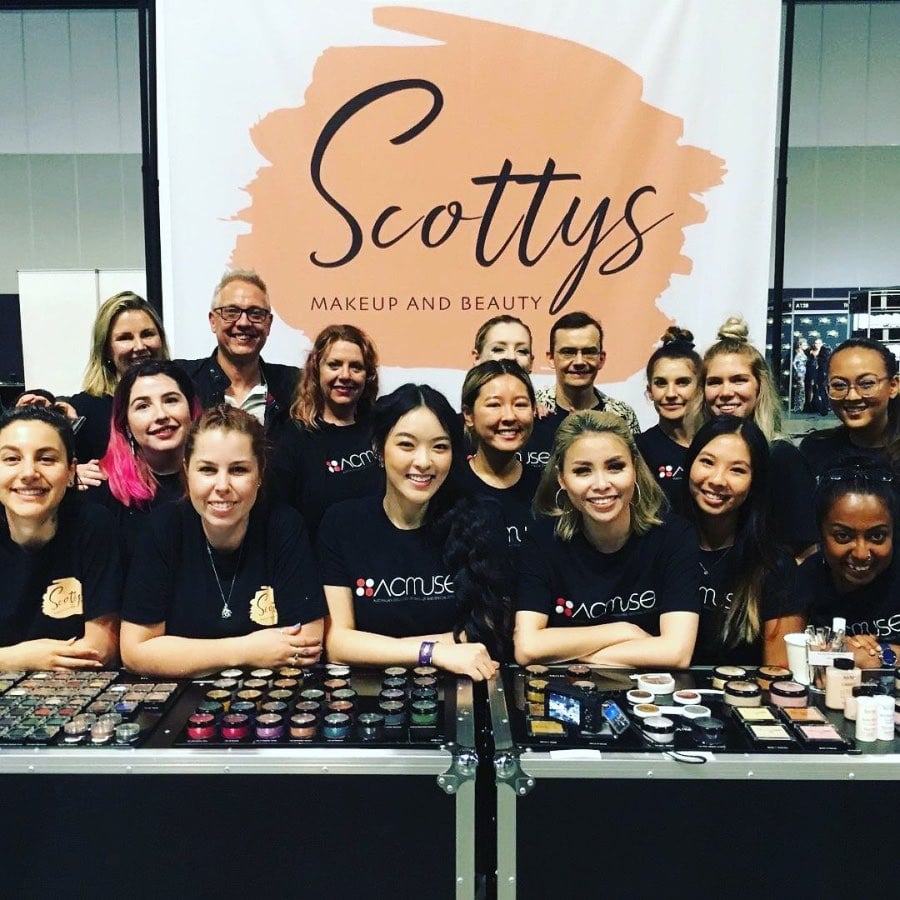
Program purpose:
Initially, Scotty’s was searching for an effective email marketing solution. When the team learned about Marsello, they decided to set up a loyalty program as well. It aimed to establish a vibrant, involved customer database. Like Pinjarra Bakery, it also wanted to implement targeted marketing tactics tailored to customer buying behaviors and preferences.
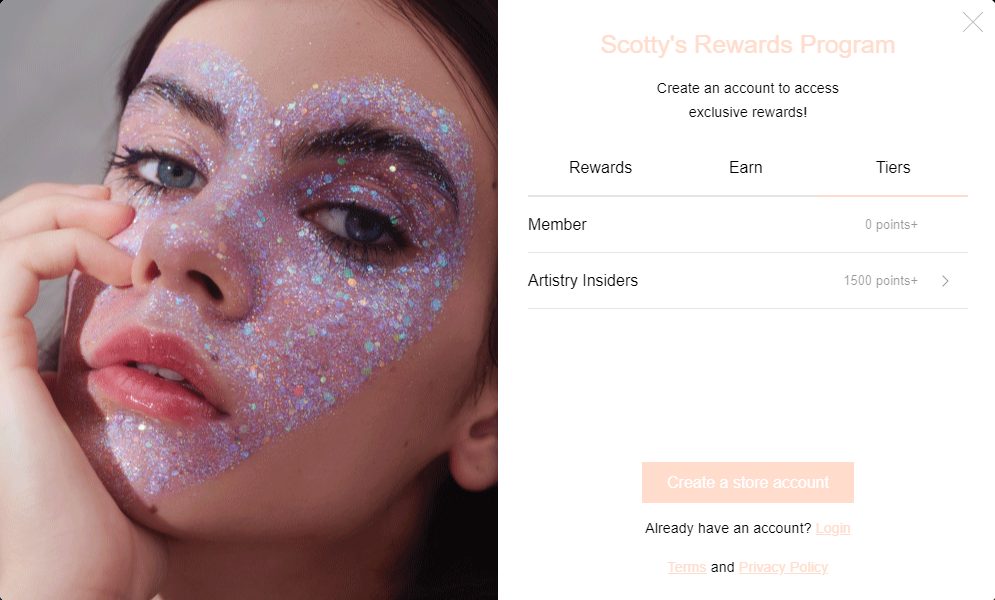
Program style:
Currently, the Marsello app works smoothly with Scotty’s Shopify and Lightspeed (X-series) setup. The brand has chosen a tier-based or tiered loyalty program where certain loyal customers (Artistry Insiders) get exclusive access to better discounts.
Program results:
63% of Scotty’s marketing-driven revenue originates from email campaigns. Its loyalty program efforts have also enhanced customer lifetime value and purchase frequency. Best of all — it has doubled its end-of-financial-year revenue.
3. Pace Athletic
Pace Athletic was founded by fitness enthusiasts, Will and Stu. They loved the welcoming atmosphere in surf stores and wanted to introduce the same to running stores which felt more exclusive.
Program purpose:
The co-founders knew they needed to build a loyal customer base to make running feel more inclusive. This is where Marsello came in. With its help, Pace Athletic created — what easily qualifies as — one of the best customer loyalty program examples on our list.
Competing in a market overshadowed by major chains posed a significant challenge for the brand. Nevertheless, it cultivated a loyal customer base by prioritizing the overall experience.
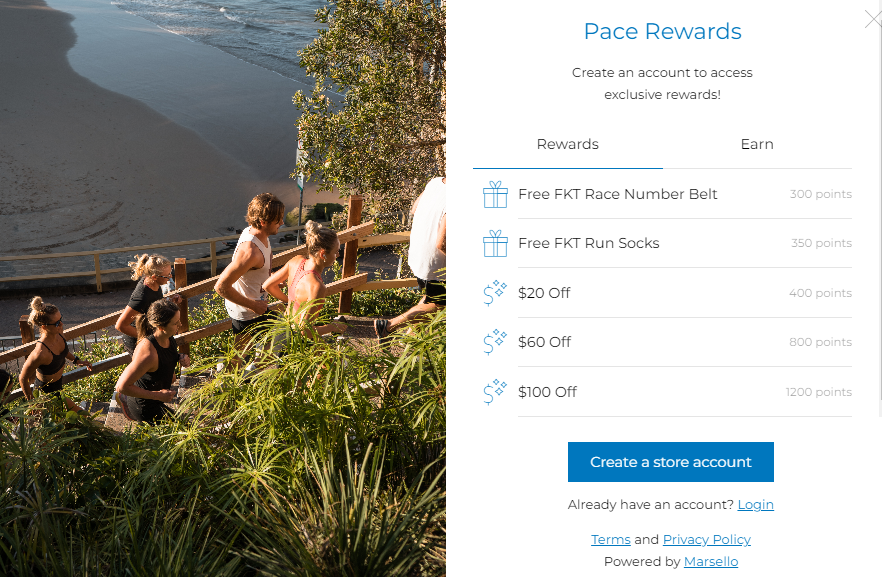
Program style:
Pace Athletic implemented a simple points-based loyalty system that worked wonders. Customers earn points corresponding to the amount they spend. They can earn more points from social media engagement, referrals, etc., and redeem them for exclusive products and discounts.
The loyalty program aims to seamlessly merge online and in-store sales data, providing a comprehensive overview of customer shopping habits. This integrated approach paves the way for personalized marketing messages and promotions based on customer data. That way, Pace Athletic can enhance customer engagement and drive more sales.
Program results:
Pace Athletic’s loyalty program account helped drive 28% of its total revenue. Because customers are highly engaged, its marketing emails yield impressive conversion rates. In fact, its email marketing campaigns contributed over 40% of its revenue, underscoring the program's impact on sales.
4. ALPHA60
Founded in 2005 by enterprising siblings Alex and Georgie Cleary, ALPHA60 has created a unique narrative since the very beginning. With a solid focus on customer happiness and an unwavering creative vision, the brand has shown that you can find success by traveling the unbeaten path.
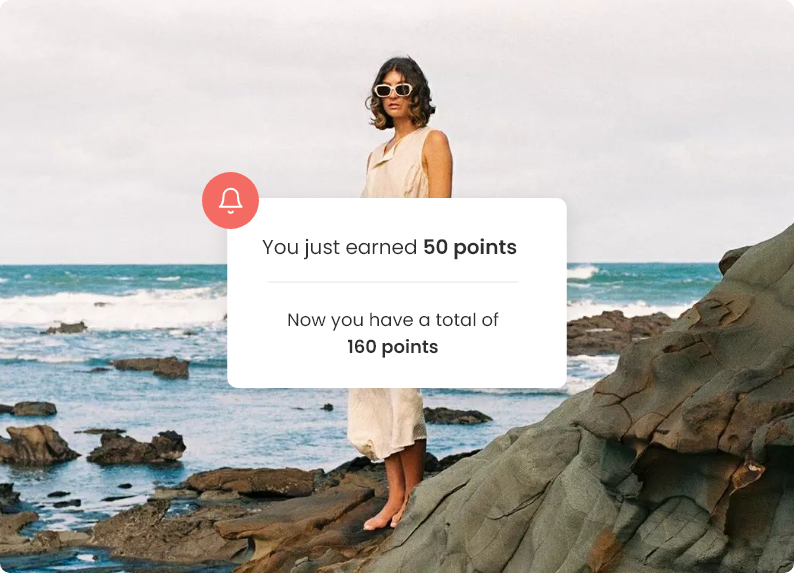
Program purpose:
The company was determined to follow a customer-first approach and wanted the brand experience to be consistent for all shoppers. It started using Marsello along with Lightspeed (X-Series), Shopify, Wrapped, and Klaviyo to help with its loyalty program strategies.
On brand with its customer-first approach, ALPHA60 wanted to make its sales, marketing, and rewards programs more efficient. It also wanted to streamline its gift card usage across platforms and synchronize customer data between its online and in-store channels.
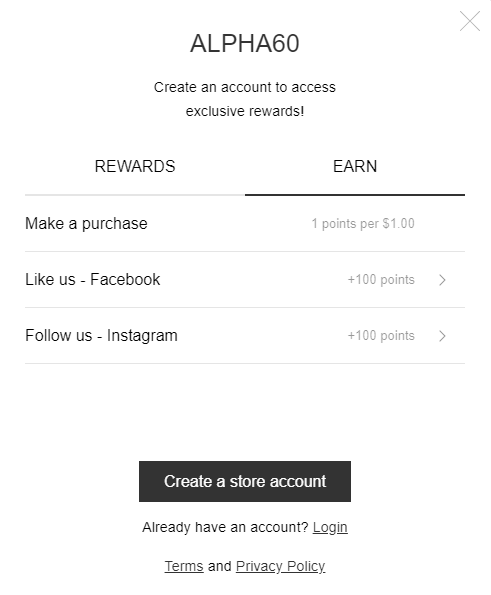
Program style:
The rewards program is simple. Customers earn points based on how much they spend and for engaging with the brand on social media. For every 1000 points earn, they get a $50 voucher.
The purpose of this loyalty program is twofold. First, it excites customers at the point of sale but rewarding them for every purchase. Secondly, the program enables the brand to utilize data for segmenting customers, which then makes it easy to launch targeted campaigns.
Program results:
Every aspect of ALPHA60's business revolves around the customer and the results of its strategies speak for themselves. With a customer-centric approach, it maintains a repeat purchase rate of around 70%, surpassing the typical range of 20% to 40% considered good for retail enterprises.
5. Brandini Toffee
Brandini Toffee is a family-operated company that excels in crafting artisanal toffee through time-honored techniques and top-notch ingredients. It wanted a loyalty program compatible with its tech infrastructure and operational model, requiring seamless integration, in-store and online.
Program purpose:
The loyalty program was meant to capture purchase behaviors and preferences, grow the database, and enable tailored rewards to enhance customer retention rates. This involves integrating data across all channels to ensure a seamless omnichannel experience for Brandini’s customers.
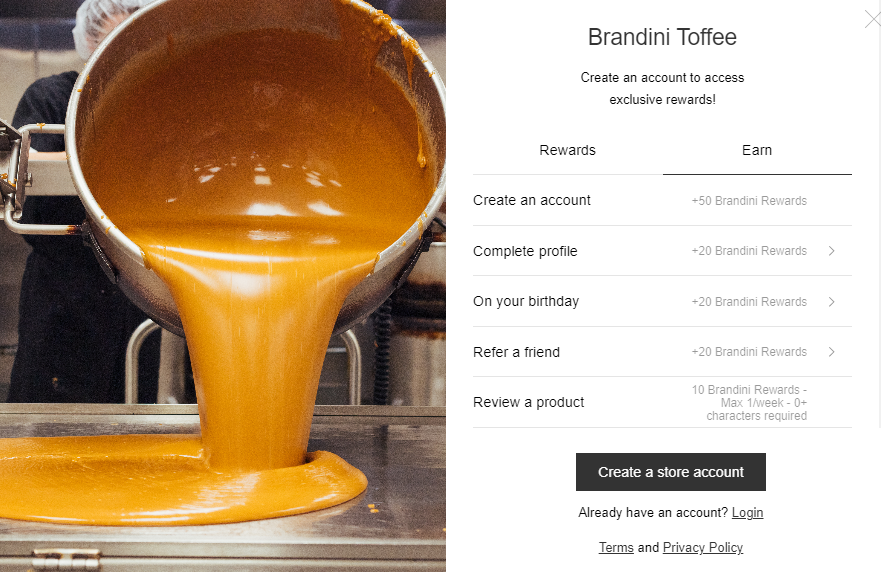
Program style:
Using Marsello, the company set up a simple, yet effective loyalty program system. Like certain brands on this list, Brandini Toffee offers customers 1 Brandini Point for every dollar spent. Bonus points can be earned on birthdays or by completing certain actions, such as sharing on social media.
Program results:
Brandini’s revenue doubled within the first eight months of implementing Marsello. Since then, it has experienced nearly triple revenue growth from 2019 to 2023.
6. TennisGear
Started by accountant and avid tennis player Mark, TennisGear is a tennis center that offers coaching, four tennis courts, and an attached retail store. The company needed the right tech for its multi-channel businesses and wanted to make shopping easier in stores and online. With Lightspeed POS and Marsello, it manages all its data in one spot, helping create customer groups.
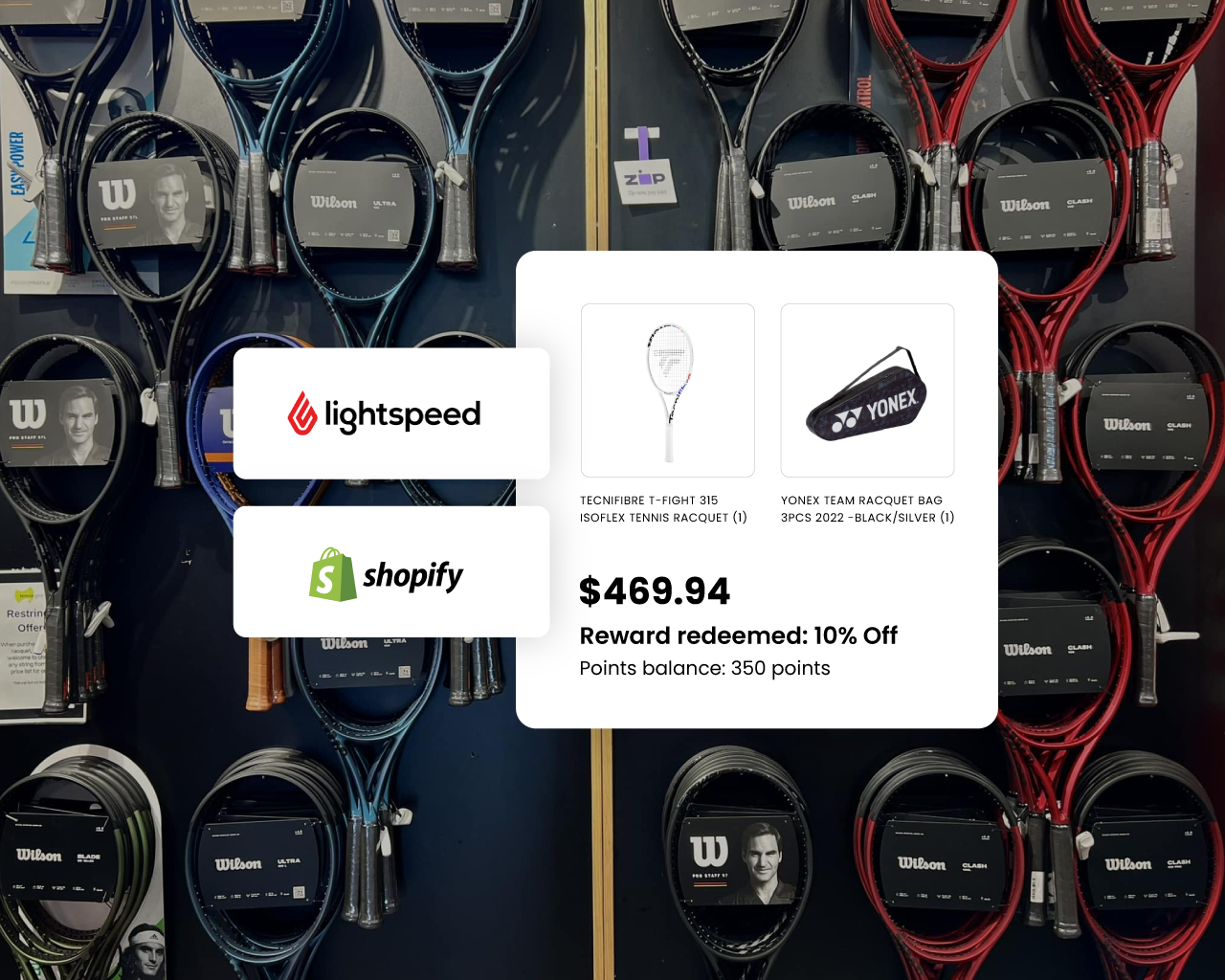
Program purpose:
The loyalty program serves multiple purposes. It centralizes sales data from all channels into one platform, aligns transactions with customer profiles, and fosters a seamless omnichannel experience.
Plus, it facilitates database growth and utilizes customer interaction data to enhance product offerings and marketing strategies.
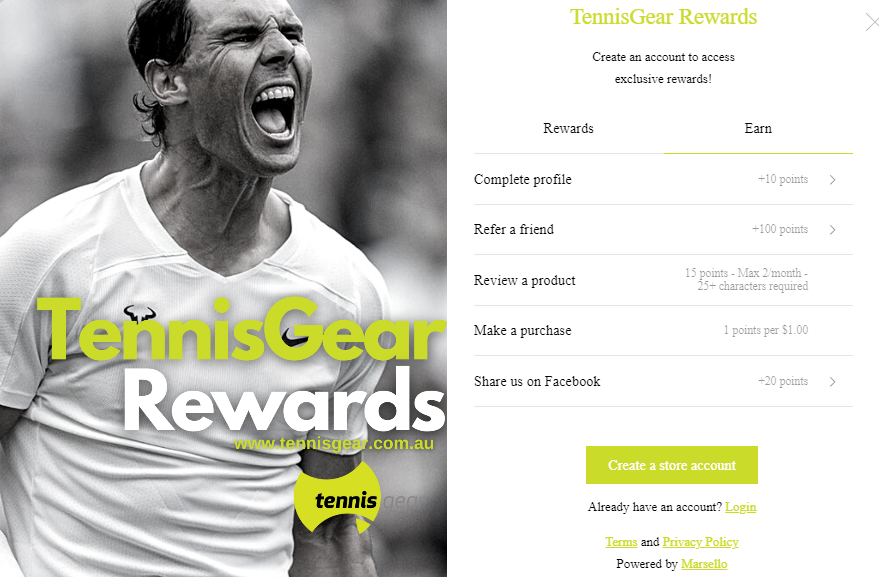
Program style:
Tennis Gear created a points-based loyalty program. Every $1 spent earns customers 1 point. Reviews, social shares, and other actions earn bonus points. All are redeemable for discounts.
Program result:
TennisGear gains full sales visibility across all channels via multi-site reports and dashboards. On implementing Marsello’s prompts for Lightspeed POS, it saw a 2.5% increase in its customer database. Additionally, Marsello's automation tools efficiently recover abandoned carts and entice lost customers to return, alongside other effective campaigns.
7. HobbyTech Toys
Based in Perth, Western Australia, Hobbytech Toys specializes in radio control products. The brand has recently broadened its inventory to encompass toys, games, Lego sets, model kits, model trains, and more. It has also prioritized improving its online presence.
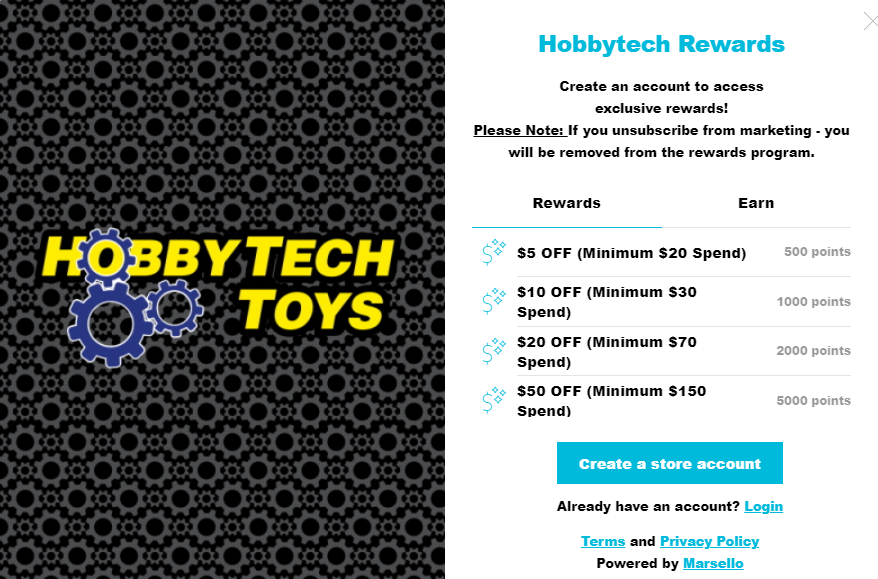
Program purpose:
Year after year, the business experienced rapid growth. About two years ago, they transitioned to a new ERP, leading to a new point-of-sale system. This prompted integration with Marcello to link Lightspeed and Shopify, enhancing the omnichannel experience.
Program style:
The store recently introduced a $5 discount voucher reward system, replacing the previous 1000-point threshold for a $10 voucher. See, many regular customers weren't reaching this threshold within 12 months due to their frequent but lower-spending visits.
Program results:
The $5 reward significantly boosted redemption rates, enhancing customer satisfaction and the store's reputation. The brand has also used its omnichannel data to improve its email marketing campaigns.
Final words
All the examples mentioned above demonstrate a crucial point — customer reward programs that fit the unique needs of small businesses can work wonders.
Special loyalty programs, easy omnichannel shopping, and automation can help grow your business and keep customers happy. That’s why if you haven’t done so yet, it’s time to launch a loyalty program that helps you reach your marketing goals.
To learn how Marsello can help, talk to one of our experts today.
Get advice from a loyalty expert and start driving repeat sales.
Read more: 7 Steps To Building A Profitable Loyalty & Rewards Program


.png?width=1200&height=400&name=Frame%206%20(4).png)
.jpg?width=760&height=351&name=Customer%20loyalty%20webinar%20(1).jpg)
